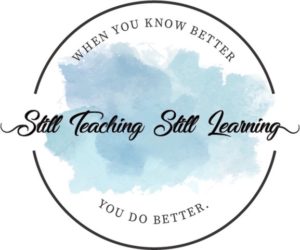
Have you heard about the wellness wheel? To many people, “wellness” means being physically healthy or even being physically fit. However, the wellness wheel is made up of eight dimensions of wellness, all of which impact your health and well-being. The eight dimensions are: physical, emotional, intellectual, spiritual, occupational, social, environmental, and financial.
Dr. Bill Hettler, co-founder of the National Wellness Institute in the U. S., created the wellness wheel in 1976. His wheel contained six dimensions: physical, emotional, intellectual, spiritual, occupational and social. Other researchers added the environmental and financial aspects later. All of these dimensions impact one another. Feeling “off” in one dimension will eventually impact all the others, so it’s important to pay attention to all eight dimensions.

Feeling overwhelmed? It’s not as hard as it sounds, and if you are working to incorporate self-care into your life, you are probably doing many of these activities already!
Physical dimension – this includes getting physical activity, good nutrition and enough sleep. If you have physical wellness, you are doing some form of exercise daily (walking counts), eating healthy food 80% of the time, and striving to get 6 – 8 hours of sleep every night.
3 self-care tips for physical dimension:
*physical activity for at least 15 minutes once or twice daily — walking, yoga poses, HIIT workouts, calisthenics — whatever makes you feel best;
*drink half your body weight in ounces of water and eat 8 – 10 fruit/vegetable servings daily;
*go to bed 15 minutes earlier.

Emotional dimension – this involves your ability to cope with life stresses and your relationships with others. If you have emotional wellness, you feel confident in your ability to handle life’s challenges and you have a few good relationships with people that you love and who love you in return. Connecting with your senses and connecting with others improve your emotional wellness. Plan regular leisure time activities for yourself.
3 self-care tips for emotional wellness:
*listen to music that you love & light a scented candle;
*watch a sunrise, sunset, or some body of water;
*develop and follow routines that you love and that you look forward to doing.

Intellectual dimension – this means knowing your unique talents and the ways in which you use your knowledge and skills. If you have intellectual wellness, you are doing things that encourage your mental growth. This helps you to have better concentration and critical thinking skills.
3 tips for intellectual wellness:
*read anything that inspires you or makes you happy;
*play a musical instrument or try a new hobby;
*tutor or train someone else to do something.

Spiritual dimension – this dimension includes your values and beliefs and your sense that your life has meaning and purpose. If you have spiritual wellness, you have clear values and a feeling of inner peace.
3 tips for spiritual wellness:
*pray or meditate, or both;
*read the Bible or other inspirational books;
*connect with a church or other organization that is doing work that you believe in.

Occupational dimension — this involves your sense of satisfaction with your work. If you have occupational wellness, you are feeling at least somewhat balanced with work and leisure time, you are building relationships with co-workers and you manage your stress at work.
3 tips for occupational wellness:
*build relationships with your co-workers;
*identify what is meaningful in your work life – if you can’t find anything, make a plan for changing to a job that will fit your values and skills;
*follow self-care tips for managing workplace stress.

Social dimension — includes your sense of belonging and connection with other people in your life. If you have social wellness, you are spending time with people you love and making time for family and friends.
3 tips for social wellness:
*make plans for and schedule time with people you love (this includes family dinners if you’re a mom);
*join a club, a church or other organization;
*develop good communication skills where you are assertive in expressing your needs and boundaries with others.
Environmental dimension — this dimension involves your surroundings, both at home and at work. Spending time in nature, keeping your home and work space somewhat decluttered and clean, and doing eco-friendly tasks such as recycling and reducing your use of energy and water can all impact your environmental wellness for the better.

3 tips for environmental wellness:
*declutter and clean your surroundings in whatever way fits your style. Some people prefer doing this in small batches and others like to go on a massive decluttering/cleaning frenzy! An orderly environment is the goal.
*be eco-friendly by recycling, planting a garden, conserve energy and water, walk or bike instead of drive;
*spend as much time outside as possible.

Financial dimension — includes your satisfaction with your financial situation. Finances can be a major source of stress. Taking steps to improve your financial wellness by sticking to a budget and cutting back on unnecessary expenses help to improve your financial wellness.
3 tips for financial wellness:
*develop and stick to a budget that works for you and your family;
*start a savings account and add to it each month – even small amounts help;
*cut back on unnecessary expenses (for me, it’s buying magazines), and reduce or eliminate your credit card debt.

In what areas of wellness are you feeling the strongest? In what areas do you want to improve? Think about setting goals for each area and making gradual improvement in all eight dimensions of wellness. Setting goals and working toward achieving them also adds to your wellness! I would love to hear your tips for any of the dimensions.

This is such a comprehensive and practical guide to holistic wellness! I appreciate the detailed tips for each dimension. I’m feeling strongest in the intellectual dimension but need to work on my environmental wellness. Thank you for the inspiration!